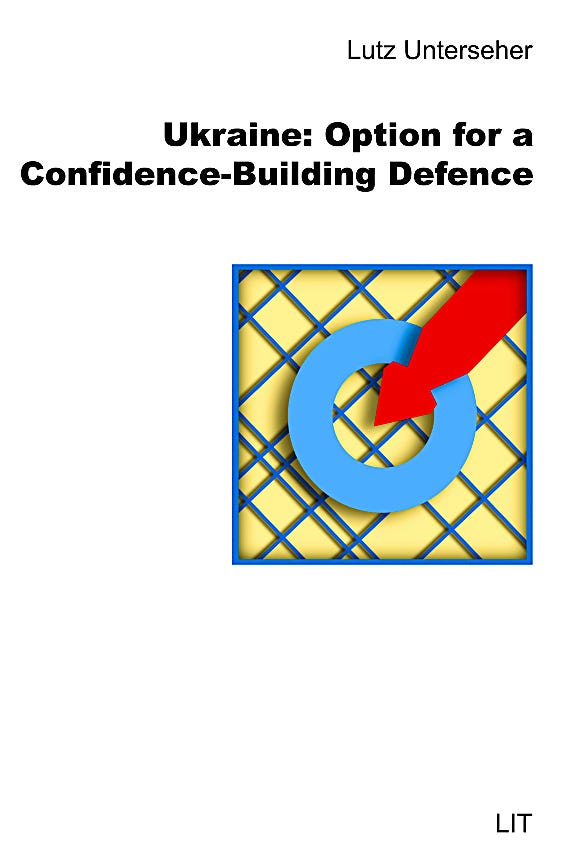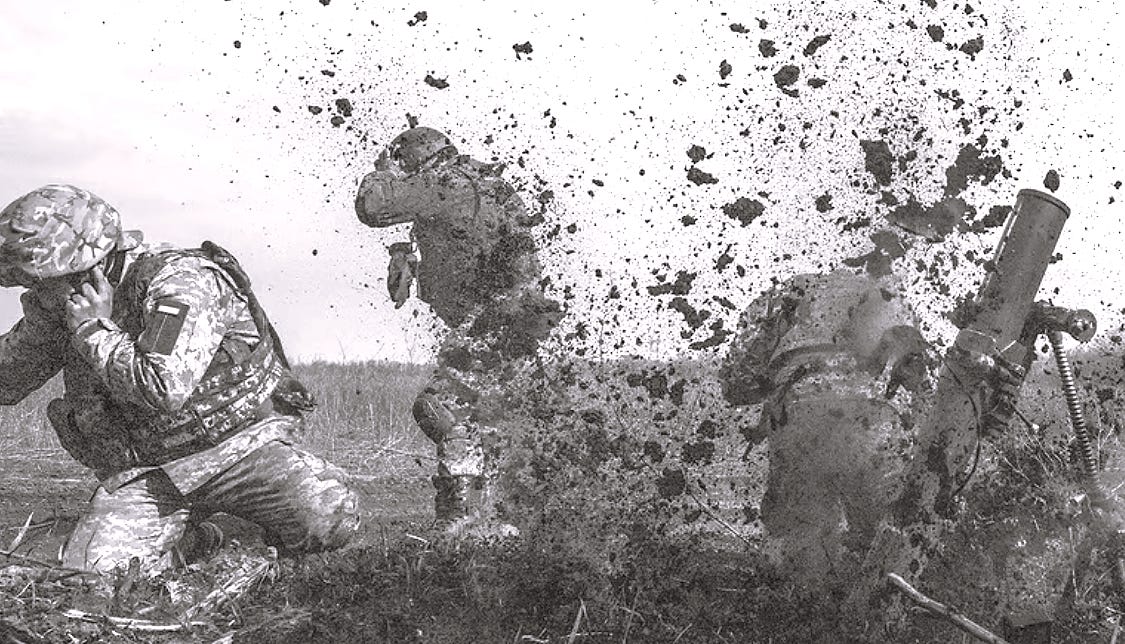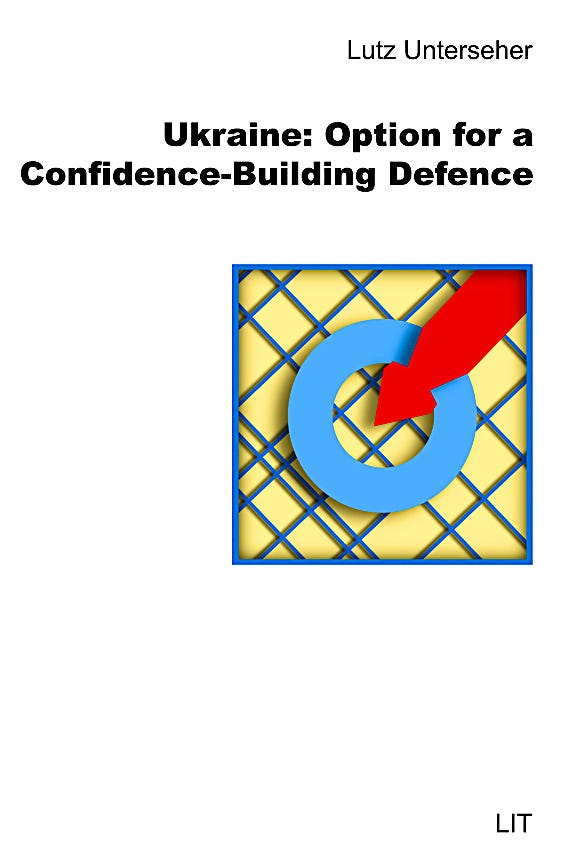On February 12th, the new Secretary of Defense of the United States, Pete Hegseth, attended the Ukraine Defense Contact Group meeting in Brussels and addressed officials from some 50 nations. He was succinct and blunt in announcing the Trump administration’s policy for “stopping the fighting [in Ukraine] and reaching an enduring peace.”1 He told the group that Trump insists that “…this war must end…by diplomacy and bringing both Russia and Ukraine to the table.” Hegseth misspoke. “The table” he refers to is several tables, rooms, or Tweets: Ukraine was not invited to the Saudi-hosted negotiations between Russia and the U.S. less than a week later.
With the new radical-right administration in power in Washington, Ukraine has lost its primary war sponsor. It is an understatement to say international politics looks grim for Ukraine.
Ukraine must discover and adopt new means to secure itself quickly.
In this edition of The Vulnerable Advocate, we feature the publication of Lutz Unterseher's book Ukraine: Options for a Confidence-Building Defense (for free) in English. The book offers a military option for Ukraine that “helps people to help themselves.” He continues,
It is about self-sustaining, emphatically defensive military protection: without integration into a military alliance and suitable as a possible building block of an all-European security system.

Considering that the book was published in German almost a year ago and that extraordinary changes are ongoing as I write, I asked Lutz to provide The Vulnerable Advocate with the following brief, updated introduction.
Some Reflections on Recent Events Regarding Ukraine and Europe
by Lutz Unterseher, February 2025
The North Atlantic Alliance (aka, NATO) was a fabrication built on illusion. It was founded on the belief, mainly held by Europeans, that the United States would – in the face of a threat from the East – be willing to compensate for the relative weakness of NATO frontline forces (yet another myth) by going nuclear with a first-use of battlefield weapons and linking this deterrence to the strategic arsenal under the singular command of the U.S president. In the final years of the Cold War, after the Soviet Union had reached strategic nuclear parity with the U.S., an increasing number of U.S. security experts and politicians conceived of battlefield nukes as playing a role in a limited war in Europe. Finis Germaniae.
Monsieur Trump has now ended this belief system, known under the term extended deterrence, which served as the doctrinal basis for U.S. dominance over what had been euphemistically called partners for over half a century. This radical policy change has one essential advantage: namely, clarity.
Given the problems of cohesion of the Europeans, which became evident in their dealing with Monsieur Putin's murderous regime, Trump has opted for another strategy to ensure American dominance.
He will seek bilateral relations with individual European countries, promising military support only if they dance to his fiddle. Those who cannot be brought to the dance floor, perhaps trying to preserve some degree of European unity, are being told, as the American umbrella is folding, to pay much more for their defense. Trump, thereby, expects to weaken Europe as a competitor in the world market.
By excluding Europeans from the Russian-American talks aimed at ending the Ukraine war, Trump has humiliated them and thereby de facto buried NATO as an entity in its own right. At the same time, he is telling individual European nations to earmark troops for an ill-defined security guarantee for Ukraine, a force the U.S. will not contribute its troops to. By bypassing NATO, Trump's developing global strategy seeks to use European national forces as auxiliaries under U.S. suzerainty.
A better way for Ukraine and Europe, promising stability with affordability, can be had by Ukraine adopting a security regime of Confidence-Building Defense – enabling that country to defend itself. This posture, on the one hand, avoids provoking the other side (thereby defusing the situation) and, on the other hand, exploits the advantages inherent to the defense: achieving deterrence through robust denial. (After all, the Russian army can no longer be considered a giant.)
An essential condition for making such a scheme work is that the Ukrainian economy must get on a dynamic upward path and that many—especially young—refugees can be motivated to return. Both conditions depend on Ukraine's speedy integration into the EU—a union that Trumpist machinations have not yet undermined, and that is not bleeding out due to outrageous military expenditures.
Here is a quick guide to reading the book:
It is a short book—87 pages—so you can read it all in one sitting, which I recommend. However, if you want to quickly get to the ‘meat’ of the military option for Ukraine, go to the Military Security section, starting on page 45. The ‘hard military stuff,’ including an illustrative force structure and cost estimate, is in The Path to Realisation section, starting on page 73.
Lutz Unterseher, Ukraine: Options for a Confidence-Building Defense, LIT, Berlin, 2024. [PDF]
Lutz Unterseher's many books are available here, including this one (in paperback).
More publications on Confidence-Building Defense are available from the Project on Defense Alternatives.
Hegseth’s short statement specifies at least a dozen radical changes in U.S. policy regarding Ukraine and Europe’s security. I will not recount them here. Instead, I refer you to the source, which is well worth viewing or reading.
Video: https://www.defense.gov/Multimedia/Videos/videoid/952219/





